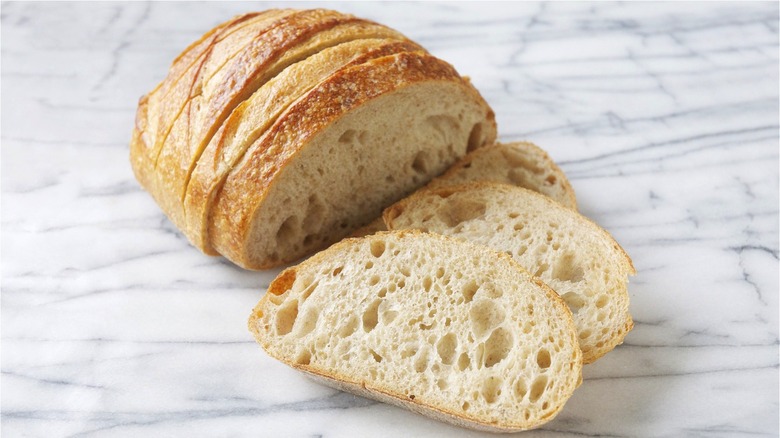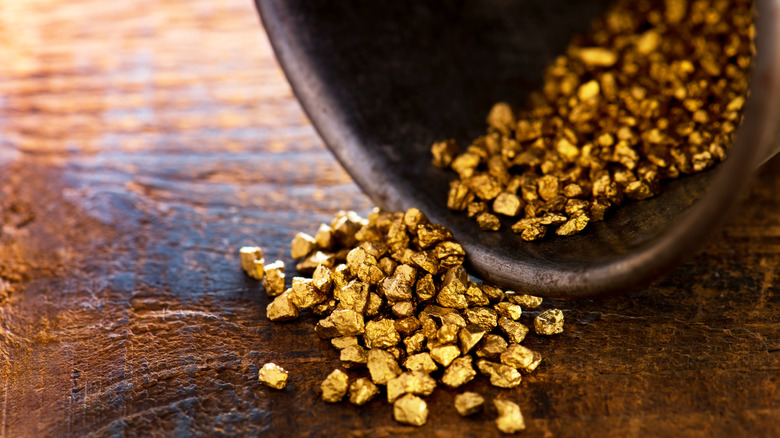San Francisco Sourdough's Slightly Nauseating Gold Mining Origins
Sourdough is a goldmine for culinary creations. With it, you can make biscuits, crackers, desserts, granola, muffins, pizza, and of course, bread (via King Arthur Baking). Sourdough bread is a tangy delight. It's also good for your gut — at least nowadays — thanks to the types of bacteria and yeast in it, according to BBC Travel. Those lifeforms also help out our bodies by digesting a bit of the flour before it ever hits our stomachs, thus lessening our belly's workload.
As you may have already learned during the quarantines of 2020 and beyond, the process of making sourdough bread begins with a starter: A mix of flour and water that sustains a colony of bacteria and yeast (via Bread & Basil). After you find or create one of these, it needs to be stored, fed, and kept from overgrowing. Once you're ready to bake, the next steps are preferment, mixing, shaping, and finally, baking bread.
People have been using something akin to sourdough for thousands of years, since ancient Egypt (BBC Travel). However, what we think of as modern sourdough bread didn't appear until the 19th century in California. Fast forward to today, and San Francisco is famous for its sourdough. Sourdough bread abounds in San Fran, and a bacteria found in sourdough is named after the city — Lactobacillus sanfranciscensis. How did sourdough bread rise to such prominence in the Golden City, and why might its origins make your stomach turn?
Miners baked questionable bread
The Gold Rush began in 1848, drawing thousands upon thousands of prospectors to the West Coast. They brought with them bread starters because of their transportability and productivity. Many of them ended up in San Francisco, whose fog was said to be key to sourdough's unique flavor (via BBC Travel).
Unfortunately, mining was a rough-and-tumble lifestyle, so these prospectors were no master chefs. Mistakes were made. The gold rushers baked stuff outside with campfires and mining pans, per Atlas Obscura. Historical documents from the time show pioneers did not hold sourdough bread in high regard. Loaves were often misshapen and so sour that they made lips pucker. Bread would easily get moldy out in the wilderness, and upset tummies were a regular occurrence.
Yet, today, you can still find places like Boudin Bakery — an establishment that dates back almost 175 years to the Gold Rush era — selling sourdough. How did this bread go from mold to gold? French and Italian pioneers opened bakeries in the Golden City during the mid-19th century to capitalize on its population boom. Although they called it Sour French Bread to elevate its branding, they still viewed the popular variety as a diamond (or gold nugget) in the rough. It wasn't until the 1900s that Wild West nostalgia brought back Gold Rush-era food into the spotlight (Atlas Obscura). Now, sourdough is so ingrained in American cuisine many don't realize the bread was originally mined from the hills of San Francisco.

